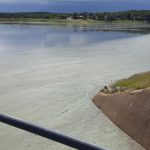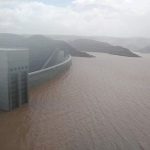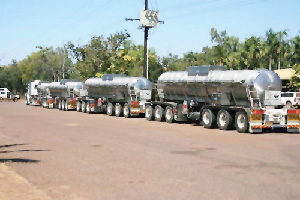
Tapping into Khaudum’s wild beauty, one new visitor at a time

Khaudum, the flat expanse of dense bush at the crook of the Zipfel, is slowly being opened up for more general tourism. Last week, the Ministry of Environment and Tourism with its development partner, opened two new park stations at the national park’s hitherto only two camping sites, Khaudum and Sikerete.
Khaudum is the unpolished diamond in Namibia’s conservation areas. Slightly bigger than 3000 square kilometres, and although not as big as the desert parks, it is still an unspoiled, undeveloped, pristine example of the higher-rainfall Kalahari sandveld biome.
The Nyae Nyae Conservancy bordering Khaudum in the south, for example, is more than twice the size of the national park.
Khaudum’s remoteness and lack of amenities are both a blessing and a drawback depending on the visitor’s point of view. It can only be reached after travelling hundreds of kilometres on rutted deep-sand tracks, there is no electricity or running water, no cellphone coverage, no emergency evacuation service, and during the wet season it is notorious, even with seasoned offroaders, for its miles and miles of flooded terrain. Drainage is tortoise-paced because it is so flat so the surface water stands for months. It is also one of the areas where the rainfall starts earliest, usually in November. In the wet months it is infested with mosquito clouds so thick, it is sometimes difficult to breathe in them.
Although it is a paradise teeming with wildlife, on average over the past ten years, less than 3000 adventurers per year found the strength and the conviction to equip their 4x4s for a trip to this isolated, secluded, stretch of ancient Africa sprinkled with gigantic baobab trees among the dense bush.
For the first time in Namibia’s history, Khaudum became somewhat more accessible with the construction of two park management camps, one at Khaudum in the northern section, and the other at Sikerete in the south. The camps enable the efficient management of the park as a whole, without which its enormous tourism potential will not be unlocked.
The park now also boasts for the first time, two proper points of entry with basic amenities for visitors. Further development of Khaudum National Park follows an integrated approach involving neighbouring communities and other stakeholders.
Construction and development of the new park management stations is the joint undertaking of the Namibian Government, supported by the German Government through the Kreditanstallt fuer Wiederafbau, the German Government’s development bank. Together the two stations required an investment of some N$80 million.
Each station comprises a new fenced entrance, a reception building, administrative offices, an information display, a picnic site, a clinic, housing for the staff members with solar power and potable water installations and a soccer field.
According to the German Embassy in Windhoek “building Khaudum Station has been a massive achievement, especially due to its remoteness and limited road access. More than four hundred thousand bricks were made on the construction site, using twenty thousand bags of cement and eight million litres of water.”
Caption: Unlocking Khaudum National Park’s natural appeal and huge potential, the Minister of Environment and Tourism, Hon Pohamba Shifeta (left) is congratulated by the German Ambassador, HE Christian Schlaga. The Governor of the Kavango East region, Hon Samuel Mbambo represented the regional government at the official opening. (Photograph – KfW)












































